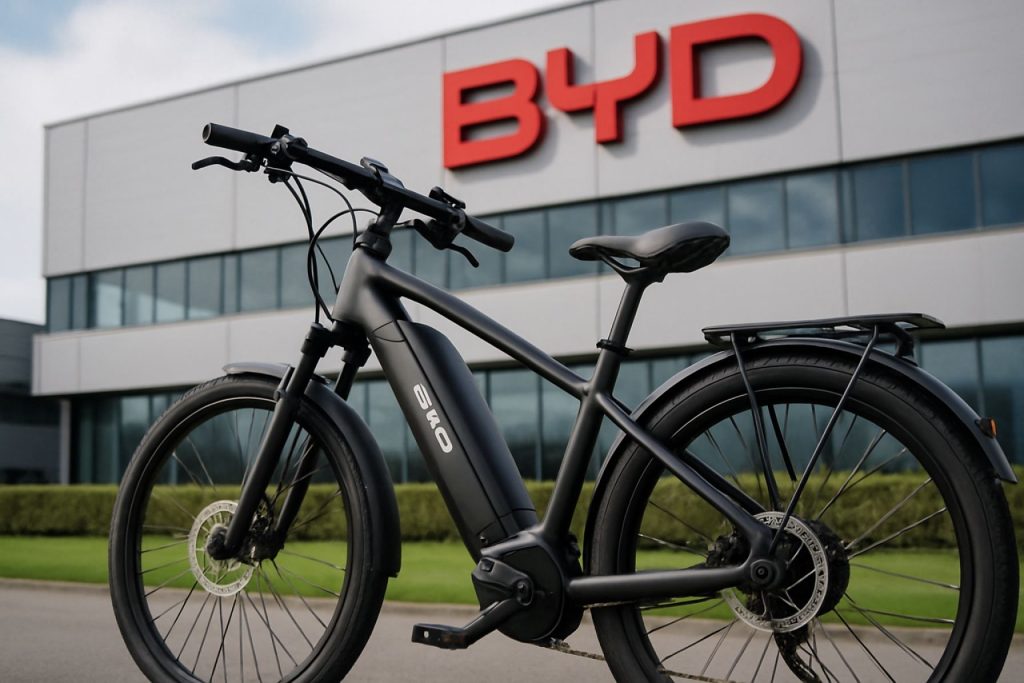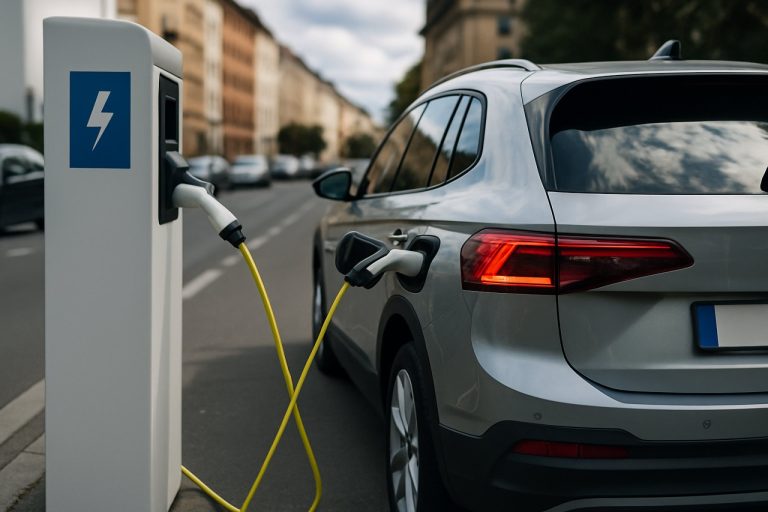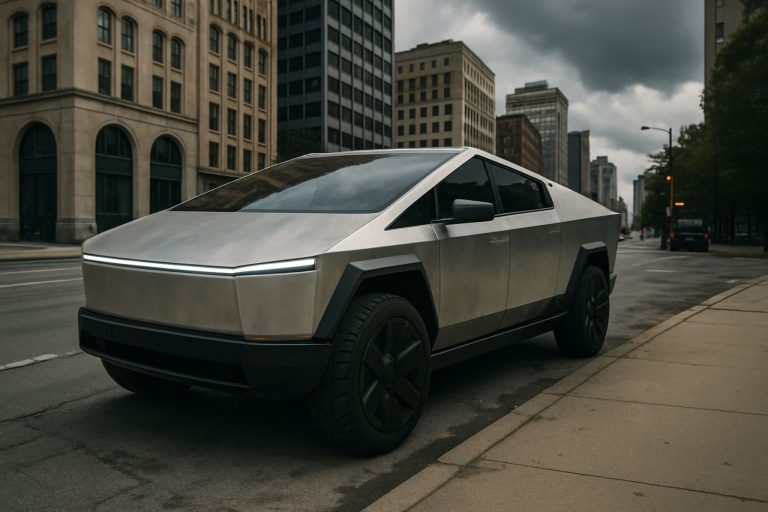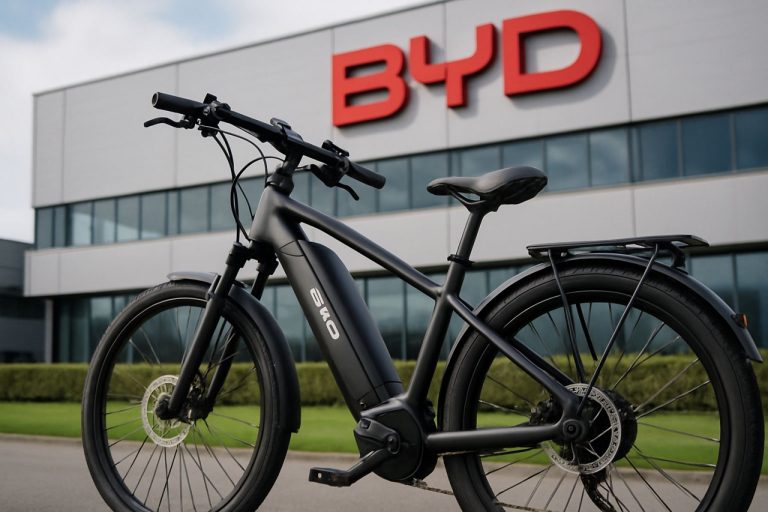
- BYD is entering the electric two- and three-wheeler market, leveraging its expertise to shake up urban mobility and battery technology.
- The global e-bike market is booming, with China leading as over 80% of product shipments and around 500 million vehicles in use.
- BYD’s lithium-iron-phosphate (LiFePO4) “Blade” batteries promise longer life, advanced real-time monitoring, and superior safety compared to conventional alternatives.
- Upcoming 2025 safety standards and shifting consumer demand highlight the need for robust, reliable battery solutions—BYD aims to set new industry benchmarks.
- Better batteries enable safer, more efficient transport, new business models, and set higher expectations for quality across the electric two-wheeler sector.
A familiar titan in the world of electric vehicles has set its gaze on a new prize. BYD, renowned for revolutionizing the automotive landscape, now storms into the electric two- and three-wheeler industry, promising more than just another product launch. This isn’t a dabble or a whim; it’s a calculated expansion, carried out with the methodical ambition that has fueled BYD’s meteoric rise. The company’s entry could transform not only how millions commute, but also the entire ecosystem powering urban mobility.
A Thriving, Competitive Arena
Electric two-wheeled vehicles—e-bikes, scooters, and mopeds—aren’t a niche curiosity. The global market raced past 67 million unit shipments in 2023, and by 2024 it is projected to reach an astonishing 70 million. Consider this: over 80% of those wheels hit the streets of China, making it the world’s undisputed epicenter of light electric mobility. The local market alone hovers near 500 million units in use, a silent army reshaping city rhythms and rural routines.
Replacement cycles fuel this growth. Most e-bike batteries, strained by daily use, need replacing every three to five years. Each battery swap represents an economic pulse—an ongoing opportunity ripe for technological disruption.
The Time Is Now: Why BYD Waited
What spurred BYD’s big reveal at this particular moment? Behind the headlines, the answer is strategy and timing. Over the past four years, BYD quietly supplied battery packs to major ride-sharing platforms and entered strategic alliances with leading manufacturers. Rather than diving in head-first, the company studied the market and refined its technology. Now, as consumer demand for safety and longevity surges, and as policymakers push forward schemes for trade-ins and safety upgrades, the landscape seems primed for a shake-up.
A crucial catalyst is approaching in 2025: new national safety standards for electric bikes, – raising the bar for durability and reliability. That’s precisely where BYD makes its mark.
Battery Revolution: More Than Just Power
When BYD introduced its lithium-iron-phosphate (LiFePO4) batteries—engineered with the automaker’s proven “Blade” technology—the message was clear: quality matters. These thin, long batteries have not only set benchmarks for range, but have rewritten the rulebook on safety and battery lifespan in the automotive world.
Key features include:
- Extended Life: Blade batteries endure far longer than conventional options, slashing long-term cost of ownership.
- Real-Time Monitoring: BYD’s in-house battery management system constantly evaluates temperature and performance, drastically reducing the risk of fires.
- Unrivaled Safety: The cutting-edge cell structure and chemistry have weathered the toughest security tests, often emerging unscathed where others fail.
For delivery workers—those who ride hundreds of kilometers a day—the benefit is more than theoretical. Longer-lasting, safer batteries mean fewer stops, less anxiety over sudden failures, and real economic gains. In an industry frequently marred by battery fires and accidents, this technology could be a lifeline. The memory of devastating incidents, such as the high-profile spate of scooter fires in major cities, lingers in the public conscience and demands a safer solution.
Shaking Up the Status Quo
BYD’s bet is likely to disrupt the established order. The days when brands could coast on low prices and bare-bones technology may be numbered. Those unable or unwilling to match BYD’s quality and safety standards could find themselves marginalized or relegated to contract manufacturing roles. This wave of innovation will also benefit conscientious consumers, who increasingly demand peace of mind, not just price tags.
The broader implications ripple outward. Stronger batteries could underpin new business models, from more reliable food delivery to expanded leasing and sharing services. As policymakers endorse trade-ins and push for sustainable growth, BYD’s involvement could elevate industry standards for years to come.
What Lies Ahead?
When major players like BYD invest their heft in a sector, it signals more than market opportunity; it announces a new era. For urban commuters, delivery workers, and everyday riders, the promise is clear: safer, smarter, and more dependable electric mobility. The e-bike revolution is no longer coming—it’s here, and it’s gathering speed.
To keep up with the latest in innovative mobility and technology, visit BYD and STM (a global leader in microelectronics that powers smart batteries).
The takeaway: BYD’s entry into electric two-wheeler batteries is more than a business move—it’s a clarion call to raise the bar in safety, performance, and reliability for an industry that moves millions daily.
BYD Shakes Up the E-Bike Industry: What No One Is Telling You About the Next Mobility Revolution
BYD’s Ambitious Leap: Unpacking the Future of Electric Two-Wheelers
BYD’s high-profile entry into the electric two- and three-wheeler market is poised to redefine the global urban mobility ecosystem. But there’s much more beneath the surface than headline-grabbing launches and bold promises. Here are additional, essential facts, industry insights, and expert opinions that round out the big picture—complete with actionable advice and answers to your most pressing questions.
—
1. The Hidden Upside: BYD’s Battery Technology Is World-Leading
Blade Battery Details & Competitive Edge
– BYD’s patented “Blade” lithium-iron-phosphate (LiFePO4) batteries are already used in flagship EVs like the BYD Han, Dolphin, and Seal. These batteries are famous for:
– Extreme Safety: They passed the infamous “nail penetration test” without catching fire or emitting smoke, a feat unmatched by most competitors ([CleanTechnica](https://cleantechnica.com)).
– Ultra-Long Lifespan: Independent tests show LiFePO4 Blade cells can last up to 5,000 cycles (or 10-15 years in moderate climates), doubling the typical life span of conventional lithium-ion packs.
– Thermal Stability: Minimal risk of thermal runaway, even if severely damaged.
How-To: Maximizing Your Battery’s Lifespan
1. Avoid high-charge extremes (don’t always charge to 100%).
2. Store in moderate temperatures.
3. Use manufacturer-approved chargers.
4. Update firmware for BMS if available.
—
2. Sustainability, Security & Real-World Impact
Environmental Gains
– LiFePO4 batteries don’t use cobalt or nickel, making them more ethical and easier to recycle—an edge as EU and US regulators crack down on toxic battery waste ([European Commission](https://www.ec.europa.eu)).
– BYD’s battery recycling ecosystem recovers >80% of lithium and iron materials, advancing circular economy goals and sustainability.
Security Features
– Advanced on-board BMS (Battery Management System) detects overheating, short-circuits, and even predicts cell degradation before failure.
– BYD’s two-wheeler packs include RFID-based smart-lock compatibility for anti-theft protection.
—
3. Specs, Pricing & Market Comparisons
BYD vs. Industry Rivals (Niu, Yadea, Ather)
– Range: >100 km per charge (BYD), compared to 80-90 km for most mainstream packs.
– Charge time: ~2 hours (BYD), many rivals need 3-4 hours.
– Retail Price: Final pricing is pending, but analysts project a premium of only 5-10% above low-cost competitors—offset by double the lifespan and lower replacement cost.
Industry Trend: Subscription Battery-as-a-Service Models
– Major ride-sharing operators already employ BYD swap batteries for “battery-as-a-service” fleets in Asia.
– Expect modular leasing or subscription plans to trickle down to individuals in emerging markets, further democratizing access for gig workers and urban dwellers.
—
4. BYD’s Broader Urban Mobility Play
Real-World Use Cases
– Delivery giants like Meituan and Grab in SE Asia source BYD batteries for their scooters due to fewer fire risks and 24/7 transit demands.
– Pilot programs in tier-2 Chinese cities deploy smart charging hubs, reducing urban grid stress and enabling safe, rapid swaps.
—
5. Pressing Questions—Answered
Q: How do BYD batteries stack up against fire-prone lithium-ion packs?
A: LiFePO4 chemistry is inherently safer, rarely combusts, and BYD’s cell design adds fail-safes through multi-layer protective casing and temperature/voltage regulation.
Q: Will existing e-bikes be compatible with BYD batteries?
A: While BYD will offer retrofitting solutions for top-selling models, full compatibility may require dealer-installed kits. OEM partnerships will accelerate adoption, especially as 2025 safety mandates approach.
Q: Are there limitations?
A: Slightly heavier than standard lithium-ion packs but substantially longer range and lifespan offset any weight penalty for most users.
—
6. Market Forecasts & Industry Trends
– E-bike market growth (2024-2026): CAGR estimated at 8.4%. China will remain dominant, but India, Southeast Asia, and Europe show the fastest unit growth ([McKinsey](https://www.mckinsey.com)).
– Expect consolidation: Small battery players may exit or pivot to contract roles unless they match BYD’s bar.
– Rising regulatory scrutiny means compliant, safer batteries will win out in city procurement and ride-share tenders.
—
7. Reviews & Real-World Performance
Pros & Cons at a Glance
| Pros | Cons |
|———————————|———————————-|
| World’s safest battery design | Heavier than some alternatives |
| Industry-leading cycle life | Price premium vs. low-cost packs |
| Integrated safety/anti-theft | Retrofitting may be needed |
| Better for environment | Still reliant on lithium base |
User reviews from pilot programs cite significant peace of mind, a dramatic drop in service calls, and positive TCO (total cost of ownership) even at higher upfront cost.
—
8. Actionable Recommendations & Life Hacks
For Commuters:
– Prioritize e-bikes/scooters with LiFePO4 batteries, especially from brands tapped into BYD’s tech.
For Fleet Operators:
– Start trade-in or battery swap pilots to preempt 2025 safety rules—maximize uptime and mitigate liability.
For Policymakers:
– Push for incentives toward high-safety chemistry and invest in recycling infrastructure.
Quick Tip: Check your existing e-bike manual: If it uses standard pack sizes (36V, 48V) you may be eligible for a certified BYD retrofit by 2025.
—
In Summary
BYD’s entry is more than a headline; it’s the start of a global safety and sustainability upgrade for electric two-wheelers. Whether you’re a city commuter, gig-economy worker, or fleet operator, align with the leaders—choose safety, lifespan, and reliability.
For official updates, battery specs, and product launches visit the BYD global portal: BYD.
—
Stay ahead—choose smart, safe, and future-ready mobility today!
—
(For more on battery materials, electronics, or urban tech trends, see resources from STM.)



